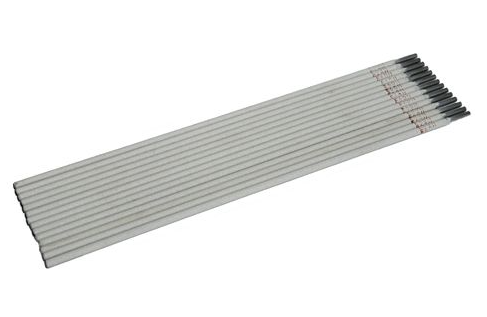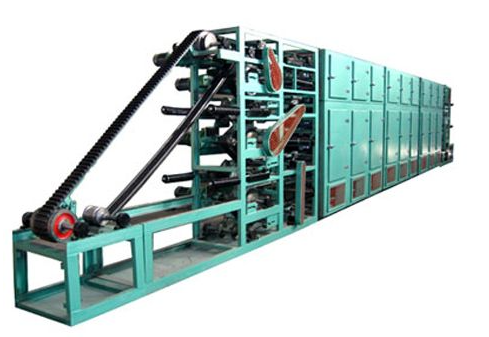Welding electrodes play a crucial role in the welding process by acting as a filler material that joins two metal surfaces. The quality, composition, and structure of electrodes are essential for achieving strong, durable welds, making the process of manufacturing welding electrodes highly specialized. In this article, we will delve into how welding electrodes are made, from the materials used to the intricate steps involved in their production. Understanding this process is not only fascinating but also vital for anyone involved in welding or manufacturing industries.
What Are Welding Electrodes?
Welding electrodes are metal wires coated with a specific material that helps in creating a stable arc during the welding process. They come in various types, including consumable and non-consumable electrodes, which differ based on their applications and materials. Consumable electrodes melt during welding to form the weld itself, while non-consumable electrodes, such as tungsten electrodes, do not melt and are primarily used in TIG welding.

AWS A5.1 E6011
Materials Used in Welding Electrode Manufacturing
The main materials for welding electrodes are the core wire and the flux coating. The core wire, typically made of mild steel or other alloyed metals, provides the filler material for the weld. The coating, or flux, is applied to the outside of the core wire and includes materials like cellulose, iron powder, and various alloys, which help in stabilizing the arc and protecting the weld pool from contaminants. The choice of materials affects the electrode’s performance, the strength of the weld, and its usability for specific metals or projects.
Step-By-Step Process of Making Welding Electrodes
The manufacturing process of welding electrodes involves several steps to ensure quality, consistency, and performance. Below is a breakdown of the main steps:
1. Core Wire Preparation
The process begins with preparing the core wire, usually a steel rod that is cut into specific lengths. The diameter and length of the wire vary depending on the type of electrode being made. The core wire is then thoroughly cleaned to remove any rust, oil, or other contaminants that could compromise the quality of the weld.
2. Flux Coating Preparation
After the core wire is prepared, the flux coating mixture is created. This mixture typically includes compounds such as binders, cellulose, iron powder, and alloying elements. These ingredients are carefully measured and mixed to ensure consistency in the coating. The exact composition of the flux is tailored to the type of welding the electrode is intended for, as different welding techniques require different arc stability and weld characteristics.
3. Coating the Core Wire
Once the flux mixture is ready, it is applied to the core wire using extrusion machines. The core wire passes through the machine, which coats it evenly with the flux. This step is critical for achieving a consistent, uniform coating that ensures a stable arc and good weld quality. The thickness of the coating is also controlled to match the specific requirements of each electrode type.
4. Drying and Baking the Electrodes
After coating, the electrodes undergo a drying and baking process. They are placed in an oven and heated to a specific temperature for a certain duration, which helps remove any remaining moisture from the flux coating. This step is essential because any moisture in the flux could lead to porosity in the weld or cause the electrode to produce excess fumes during welding.
5. Quality Control and Packaging
The final step is quality control, where the electrodes are inspected for consistency, coating thickness, and any potential defects. Only electrodes that pass the inspection are packaged and labeled according to their type and specifications. These high standards ensure that each electrode performs optimally during welding.

Welding Electrodes Production Line
Why Quality Control Is Essential in Electrode Manufacturing
Quality control is crucial in electrode manufacturing to ensure the electrodes meet safety standards and perform effectively. Each electrode undergoes rigorous testing to verify the composition, coating thickness, and overall quality. This ensures that welders receive products they can trust, minimizing the risk of weld defects or failures. Quality-controlled electrodes improve weld consistency, reduce the occurrence of splatter, and maintain arc stability, ultimately resulting in a stronger, more reliable weld.
Common Types of Welding Electrodes
Several types of welding electrodes are made, each suited for different welding techniques and materials. Some common types include:
1. Shielded Metal Arc Welding (SMAW) Electrodes: These electrodes, also known as “stick electrodes,” are widely used for manual welding.
2. Gas Tungsten Arc Welding (GTAW) Electrodes: Non-consumable tungsten electrodes are commonly used in TIG welding, where precise control and cleanliness are essential.
3. Flux-Cored Arc Welding (FCAW) Electrodes: These electrodes have a hollow core filled with flux, ideal for heavy-duty and outdoor welding applications.
Frequently Asked Questions About Welding Electrodes
Q: What is the purpose of the flux coating on an electrode?
A: The flux coating stabilizes the arc, protects the weld pool from oxidation, and helps control the temperature, ensuring a strong and clean weld.
Q: How do I choose the right electrode type for my project?
A: Choosing the right electrode depends on the base metal, the welding technique, and the desired strength and appearance of the weld. Each type is designed for specific applications, so selecting the right one ensures better weld quality.
Q: Can electrodes expire?
A: Yes, electrodes can degrade over time, especially if they absorb moisture from the environment. Proper storage in a dry place is essential to maintain their performance.
Conclusion
Welding electrodes are essential components in the welding process, providing the filler material and stabilizing arc properties required for strong, durable welds. The intricate manufacturing process—from core wire preparation to flux coating and quality control—ensures each electrode is safe, efficient, and effective. By understanding how welding electrodes are made, welders and manufacturers can better appreciate the importance of selecting high-quality electrodes for their specific welding applications.
Contact us for more information about our welding electrodes production line
Do you want to receive more information about welding electrodes production line? Then we are happy to answer your questions. Fill in the contact form or send an email to https://www.sino-welding.com.









